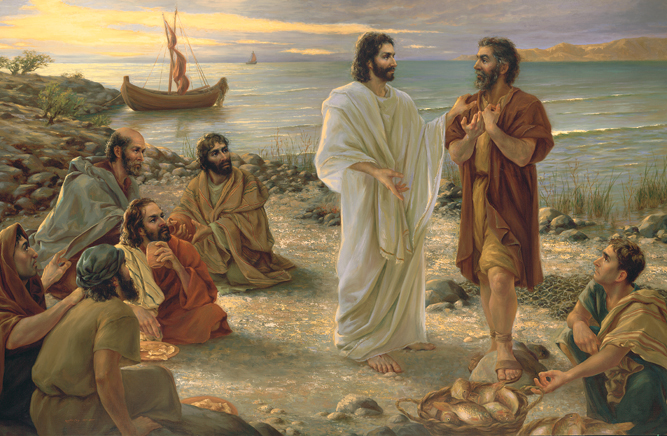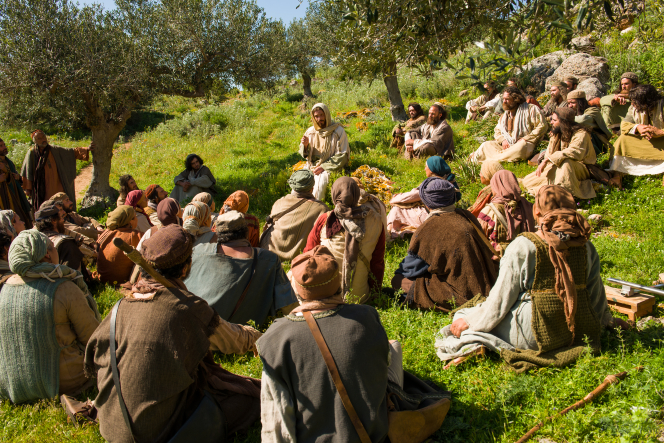The last year has seen a whirlwind of changes in the programs for members of The Church of Jesus Christ of Latter-day Saints (sometimes mistakenly called Mormons or the Mormon Church). Just as we were figuring out the new ministering program and the local priesthood organization, Church leaders announced another significant change—that instead of a three-hour block of meetings, we would have a two-hour block of meetings. Then, Church leaders announced another change in the progression of youth in the youth programs. And along the way our prophet, President Russell M. Nelson, reiterated the need to use the full name of the Church instead of a nickname.
Some might wonder what all the fuss is about. What’s so important about a name? And what’s the big deal with all of these changes? What do they mean, anyway? While we live in a time and a culture that mocks the sacred, celebrates the profane and wonders what ancient teachings would ask people to exercise self-control over their bodies, the Lord is asking more of His people. Elder Ronald A. Rasband said,
Throughout our life, Sister Rasband and I have traveled the world on various Church and professional assignments. … Everywhere we have gone, we have witnessed the hand of the Lord going before His servants, preparing the people and the way ahead so that all His children might be blessed according to their every need.
The goal of all of the changes is to allow Latter-day Saints to step up and serve each other and the Lord in a higher, holier way as well as strengthen their relationship with Him.
Programs and Principles
The programs of the gospel of Jesus Christ evolve and change according to the needs of His Church. The principles of the gospel, however, remain the same. Elder Glen L. Pace said,
As great as the various programs of the Church are, they carry with them a potential danger. If we are not careful, it is possible to get so wrapped up in the plan that we forget the principles. We can fall into the trap of mistaking traditions for principles and confusing programs with their objectives. …
Programs blindly followed bring us to a discipline of doing good, but principles properly understood and practiced bring us to a disposition to do good.
The purpose of the programs and teachings of the Church is to help us cultivate a disposition to do good. President Russell M. Nelson said,
A hallmark of the Lord’s true and living Church will always be an organized, directed effort to minister to individual children of God and their families. Because it is His Church, we as His servants will minister to the one, just as He did. We will minister in His name, with His power and authority, and with His loving-kindness.
The new programs will help to accomplish this goal by streamlining the process and unifying the efforts of Church members. Let me explain.
Local Church Organization
To more fully comprehend these changes, it’s important to understand the organization of a local congregation of The Church of Jesus Christ. Women who are 18 years of age and older are part of the women’s organization called the Relief Society. They meet together, except for those who are called to serve in the Primary (or children’s organization) and Young Women’s programs.
Men were organized according to the office of the priesthood that they hold. The priesthood is the power and authority to act in the name of God for the salvation of mankind. It is separated into the Aaronic (or lesser) priesthood and the Melchizedek (or higher) priesthood. There are different offices in both the Aaronic and Melchizedek priesthoods. Most men over the age of 18 have been ordained to the Melchizedek priesthood as either an elder or a high priest. Thus, the men were separated into either elders quorums or high priest quorums. Each quorum functioned separately and had different administrative duties. (See here for more information on priesthood quorums and organization.)
One of the changes announced in the April 2018 General Conference was a unification of the elders and high priests quorums in each ward into one elders quorum. President Nelson said,
This adjustment will greatly enhance the capacity and the ability of men who bear the priesthood to serve others. …
These modifications have been under study for many months. We have felt a pressing need to improve the way we care for our members and report our contacts with them. To do that better, we need to strengthen our priesthood quorums to give greater direction to the ministering of love and support that the Lord intends for His Saints.
This organizational change paved the way for a new effort called ministering.
A New Effort
Before April 2018, Latter-day Saints looked out for one another with home and visiting teaching. Men visited families in home teaching and women visited other women in visiting teaching. Men were either paired with their wives or another man (or a young man aged 14 or older), and women were paired with another woman. The companionships (mostly of two people) visited homes each month—or at least they tried to do so. Home and visiting teachers offered an uplifting, gospel-centered message from the First Presidency, or leaders of the Church. And each companionship reported their efforts to a coordinator on a monthly basis.
When members had problems or needed any kind of help, they could turn to their home and visiting teachers. If a family required more help than the companionship could give, they would relay the needs of the family to the Relief Society president and either the elders quorum or high priest quorum president.
All of this changed in at the April 2018 General Conference. President Nelson said,
For months we have been seeking a better way to minister to the spiritual and temporal needs of our people in the Savior’s way.
We have made the decision to retire home teaching and visiting teaching as we have known them. Instead, we will implement a newer, holier approach to caring for and ministering to others. We will refer to these efforts simply as “ministering.”
Ministering was not just a new name, it was a new program with a new focus. So what is the difference?
Ministering
With the unification of the priesthood holders into one elders quorum, the Relief Society and elders quorums presidents in each congregation, or ward, could more easily combine their efforts in making ministering assignments. Sister Jean B. Bingham taught,
Ministering looks like elders quorum and Relief Society presidencies prayerfully counseling about assignments. Rather than leaders just handing out slips of paper, it looks like counseling about the individuals and families in person as assignments are given to ministering brothers and sisters. … It looks like becoming part of someone’s life and caring about him or her. …
Combining such Relief Society efforts with the now-restructured elders quorum will bring a unity that can yield astonishing results. Ministering becomes one coordinated effort to fulfill the priesthood duty to “visit the house of each member” and to “watch over the church always, and be with and strengthen them,” as well as to achieve the Relief Society purpose to help one another prepare for the blessings of eternal life.
Elder Jeffrey R. Holland said,
… We have a heaven-sent opportunity as an entire Church to demonstrate “pure religion … undefiled before God”—“to bear one another’s burdens, that they may be light” and to “comfort those that stand in need of comfort,” to minister to the widows and the fatherless, the married and the single, the strong and the distraught, the downtrodden and the robust, the happy and the sad—in short, … every one of us, because we all need to feel the warm hand of friendship and hear the firm declaration of faith. However, I warn you, a new name, new flexibility, and fewer reports won’t make an ounce of difference in our service unless we see this as an invitation to care for one another in a bold, new, holier way….
Mothers and Daughters
Another change brought by the ministering program was that young women ages 14 and older could be assigned to routes with their mothers. Sister Bingham said,
Youth can share their unique gifts and grow spiritually as they serve alongside adults in the work of salvation. Involving youth in ministering assignments can also increase the reach of Relief Society and elders quorums’ caring for others by increasing the number of members who participate.
As I think about the stellar young women I have known, I get excited for those Relief Society sisters who will have the privilege of being blessed by a young woman’s enthusiasm, talents, and spiritual sensitivity as they serve side-by-side or are ministered to by them. And I am equally delighted by the chance young women will have to be mentored and taught and strengthened by their sisters in Relief Society. This opportunity to participate in building the kingdom of God will be a tremendous benefit to young women, helping them better prepare to fulfill their roles as leaders in the Church and the community and as contributing partners in their families. As Sister Bonnie L. Oscarson shared yesterday, young women “want to be of service. They need to know they are valued and essential in the work of salvation.”
Ministering to and helping others has now become more of a family effort. It is a concerted effort to follow the counsel of the Savior to love one another.
A Higher, Holier Way
Ministering, then, is a higher, holier way because it requires more of us. Rather than just checking off monthly requirements, ministering companionships are asked to get to know the families they are serving—the names of each family member, their likes and dislikes, needs and wants. In short, to love each person and see each person as the Savior does. This does not demean or devalue to efforts of home and visiting teachers throughout the years. Elder Holland said,
… I join with you in saluting every block teacher and ward teacher and home teacher and visiting teacher who has loved and served so faithfully throughout our history. Our prayer today is that every man and woman—and our older young men and young women—will leave this general conference more deeply committed to heartfelt care for one another, motivated only by the pure love of Christ to do so. In spite of what we all feel are our limitations and inadequacies—and we all have challenges—nevertheless, may we labor side by side with the Lord of the vineyard, giving the God and Father of us all a helping hand with His staggering task of answering prayers, providing comfort, drying tears, and strengthening feeble knees. If we will do that, we will be more like the true disciples of Christ we are meant to be.
Rather, ministering begins with the end in mind—to love each other. As Sister Bingham said,
After all is said and done, true ministering is accomplished one by one with love as the motivation. The value and merit and wonder of sincere ministering is that it truly changes lives!
The Name of the Church
So why in the midst of all these changes did President Nelson ask members to use the full name of The Church of Jesus Christ instead of its nicknames? It is to bring focus back to the author and finisher of our faith—the Savior. President Nelson said,
[This] is a correction. It is the command of the Lord. Joseph Smith did not name the Church restored through him; neither did Mormon. It was the Savior Himself who said, “For thus shall my church be called in the last days, even The Church of Jesus Christ of Latter-day Saints.” …
Thus, the name of the Church is not negotiable. When the Savior clearly states what the name of His Church should be and even precedes His declaration with, “Thus shall my church be called,” He is serious. And if we allow nicknames to be used or adopt or even sponsor those nicknames ourselves, He is offended.
What’s in a name or, in this case, a nickname? When it comes to nicknames of the Church, such as the “LDS Church,” the “Mormon Church,” or the “Church of the Latter-day Saints,” the most important thing in those names is the absence of the Savior’s name. To remove the Lord’s name from the Lord’s Church is a major victory for Satan. When we discard the Savior’s name, we are subtly disregarding all that Jesus Christ did for us—even His Atonement. …
After all He had endured—and after all He had done for humankind—I realize with profound regret that we have unwittingly acquiesced in the Lord’s restored Church being called by other names, each of which expunges the sacred name of Jesus Christ!
As Latter-day Saints, we take upon ourselves the name of Jesus Christ, even—and especially—in the name of His Church.
A Higher Commitment
Following the prophet’s counsel always requires faith and commitment, but especially when the prophet announces major changes. It also requires us to become more fully committed to the gospel and to Jesus Christ. But we need not take the prophet’s word alone, we can find out for ourselves through personal revelation. President Nelson said,
One of the things the Spirit has repeatedly impressed upon my mind since my new calling as President of the Church is how willing the Lord is to reveal His mind and will. The privilege of receiving revelation is one of the greatest gifts of God to His children.
Through the manifestations of the Holy Ghost, the Lord will assist us in all our righteous pursuits. …
Imagine the miracle of it! Whatever our Church calling, we can pray to our Heavenly Father and receive guidance and direction, be warned about dangers and distractions, and be enabled to accomplish things we simply could not do on our own. If we will truly receive the Holy Ghost and learn to discern and understand His promptings, we will be guided in matters large and small.
And Heavenly Father has set the pattern for us to follow. President Nelson continued,
Pray in the name of Jesus Christ about your concerns, your fears, your weaknesses—yes, the very longings of your heart. And then listen! Write the thoughts that come to your mind. Record your feelings and follow through with actions that you are prompted to take. As you repeat this process day after day, month after month, year after year, you will “grow into the principle of revelation.”
Our higher commitment to the Savior and His teachings, along with more fully seeking the guidance of the Holy Spirit, prepares us for the next big changes—reorganizing the Sunday meeting schedule and the new progression schedule for Latter-day Saint youth.











As a “non-Mormon” member of the press who has covered some of the wonderful things your Just Serve organization as done for my community here in San Jacinto, California, I was impressed with the sincerity in this article to continually push for improvements in the way you help your own members. In the future, in articles I write about your church, I will start with the full name of the church and then use LDS if I need to reference it again.
I hope to continue to provide coverage of the many good works that The Church of Jesus Christ of the Latter-day Saints provides to our area, and to work with the local Stake President John Evans and Communications Director Jon Ranes.,
Sincerely,
Dennis A. Fletcher
Reporter
Hemet Eye News
Hemet, California
http://www.HemetEyeNews.com